Final Touch: Musings from the Deck at USA College Challenge
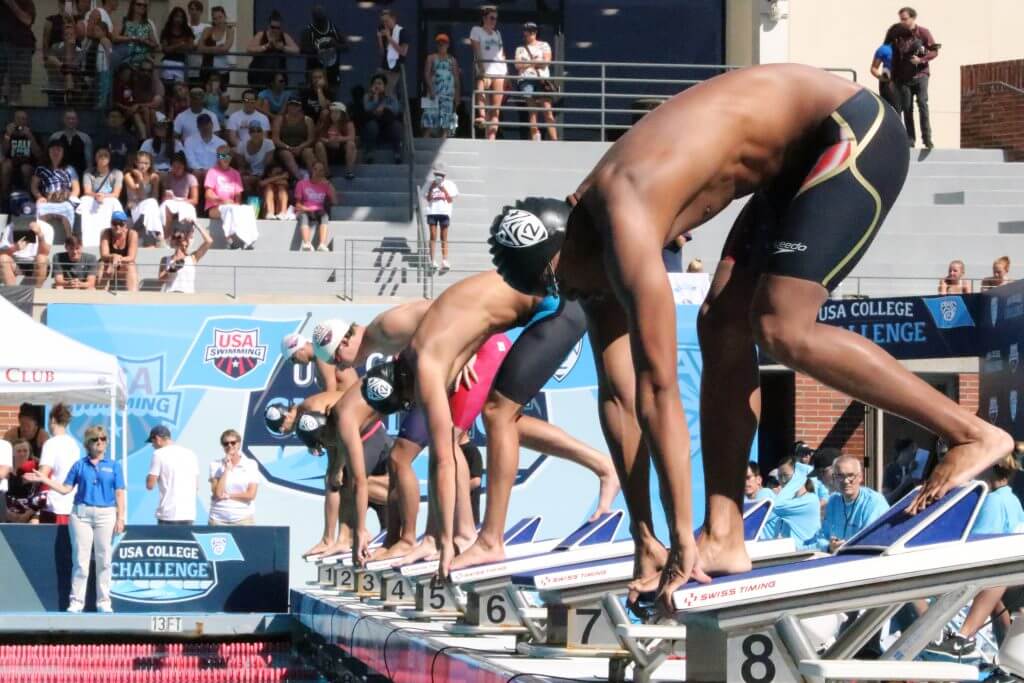
By David Rieder.
Before the first session of the USA College Challenge in Los Angeles, Lindsay Mintenko was giddy. The meet was her first in her new position as Managing Director of the U.S. National team, but with nothing really at stake in one of swimming’s most fun formats, she could relax and enjoy herself.
“This is a really fun group of people because it’s different ages. Some of them haven’t done a dual meet before, and some of them haven’t done a dual meet in five years or 10 years,” Mintenko said. “It’s cool. It’s really cool. It’s going to be a fun meet. Dual meets are always fun.”
You bet. And location didn’t hurt, either. There are few better settings for an outdoor swim meet than Southern California in late October, and Mother Nature delivered its end of the bargain. Sure, it got a little chilly after the sunset around 6:30 p.m. Saturday, but Sunday brought warm temperatures and plenty of sun.
The stands at the Uytengsu Aquatics Center were mostly full for both sessions, and fans enjoyed post-meet autograph sessions and being in the background for athlete selfies. The spectators were a bit biased towards Katie Ledecky and the USC swimmers, but that’s to be expected.
Compare with the 2016 edition of the College Challenge: inside the cavernous IUPUI Natatorium, barely one-third full, during a chilly midwestern November. Advantage, Los Angeles.
Plus, in a departure from last year’s blowout, fans at this year’s College Challenge actually got to witness a competitive event.
************************************************************************************
The group of U.S. National team members Mintenko was responsible for was, to say the least, an interesting mix. As she was at the World Championships this summer, Regan Smith was the youngest on the roster at age 15, while 32-year-old Matt Grevers was the team’s senior member.
The main difference in LA: no middle group. The U.S. roster consisted entirely of postgraduate professionals and 18-and-under swimmers, with all of the country’s best 18-to-22-year-olds in the midst of their college seasons, competing in the Pac-12 or elsewhere.

Daniel Krueger — Photo Courtesy: Peter H. Bick
“Not everyone knows each other,” Mintenko said. “Unfortunately, in this situation there’s not a lot of time to get to know each other, but we’re having a good time. They’re having fun. It’s good that there’s not just one junior team athlete and the rest are postgrads.”
One of those high-school-aged swimmers, Daniel Krueger, posted the fastest freestyle split of any U.S. team member on the meet-opening 400 medley relay, at 42.53. Tom Shields, an Olympic gold medalist nine years’ Krueger’s senior, didn’t know anything about the teenager before the two met on Saturday, but Shields was impressed, and he appreciated the opportunity to connect with some of the young talent in the sport.
“I wouldn’t have known who that guy was,” Shields said. “I think there’s a disconnect from the pre-recruitment to post-recruitment in the swimming community. That’s like the biggest divide, so this kind of softens that on the national team. If these guys are badass enough to make the team, then why not?”
************************************************************************************
It’s too easy to take Katie Ledecky’s excellence for granted. Watching her break world records (remember the Olympics?) and win major international distance races by five-plus seconds is the astonishing part, while it almost flies under the radar that her in-season swims are just as quick as anyone else will go come championship time.
Consider her 500 free from College Challenge: 4:28.75, the 12th-fastest performance of all time. Leah Smith, meanwhile, is the second-fastest performer in history, at 4:28.90. The 11 efforts quicker than Ledecky’s from Saturday evening? Ledecky’s swims from last year’s NCAA championships, Pac-12 championships and Ohio State Invite, from her high school state championships and from Nation’s Capital’s annual December invitation.
In her 1000 free, Ledecky’s time was 9:11.68, eighth-fastest all-time. In the 200 free, she won in 1:41.60, 21st all time. Routine? Perhaps. But it’s October, not exactly a month that typically produces lightning-quick swimming, and as Ledecky pointed out after the meet: those times are still darn fast.
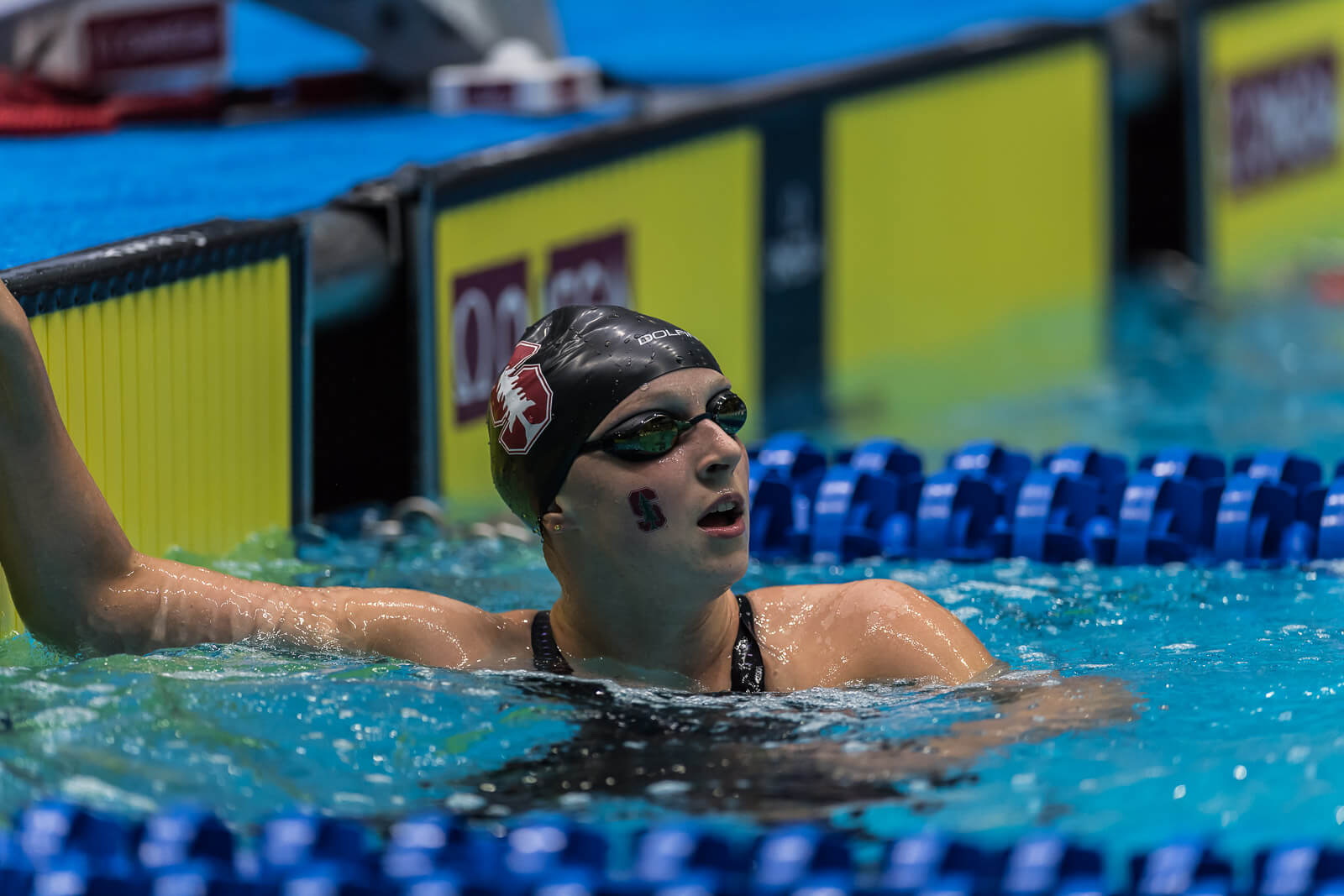
Katie Ledecky — Photo Courtesy: Peter H. Bick
“I had no idea what to expect coming into this meet,” she said. “We threw suits on, and that helps a lot. Those are really good times right now, but I’m honestly going to just forget about them and move on. You can’t read into them, you can’t take too much confidence from them because you just have to move forward and really just not get comfortable.”
That’s the thing with Ledecky—even if she’s not at her best, even if she’s not perfect, she’s still the best in the world.
So what she didn’t win the 200 free at the World Championships this year? “By no means did I have a disappointing summer,” she insisted. “Winning five golds and a silver, that’s the best medal count I’ve had at an international meet.”
True statement. And that was a year she called “challenging” and a year when after she accomplished everything she wanted to at the Olympics, “resetting those goals was tough last year.”
On the Katie Ledecky curve, her times from College Challenge were unremarkable. On any normal grading scale, she gets an “A.”
************************************************************************************
Once elite swimmers finish up their NCAA eligibility, they zero-in on long course swimming. The Olympic Games are held in long course, so most prep meets are also long course. Hence, opportunities for Olympic hopefuls to race in the familiar short course yards format are scarce.
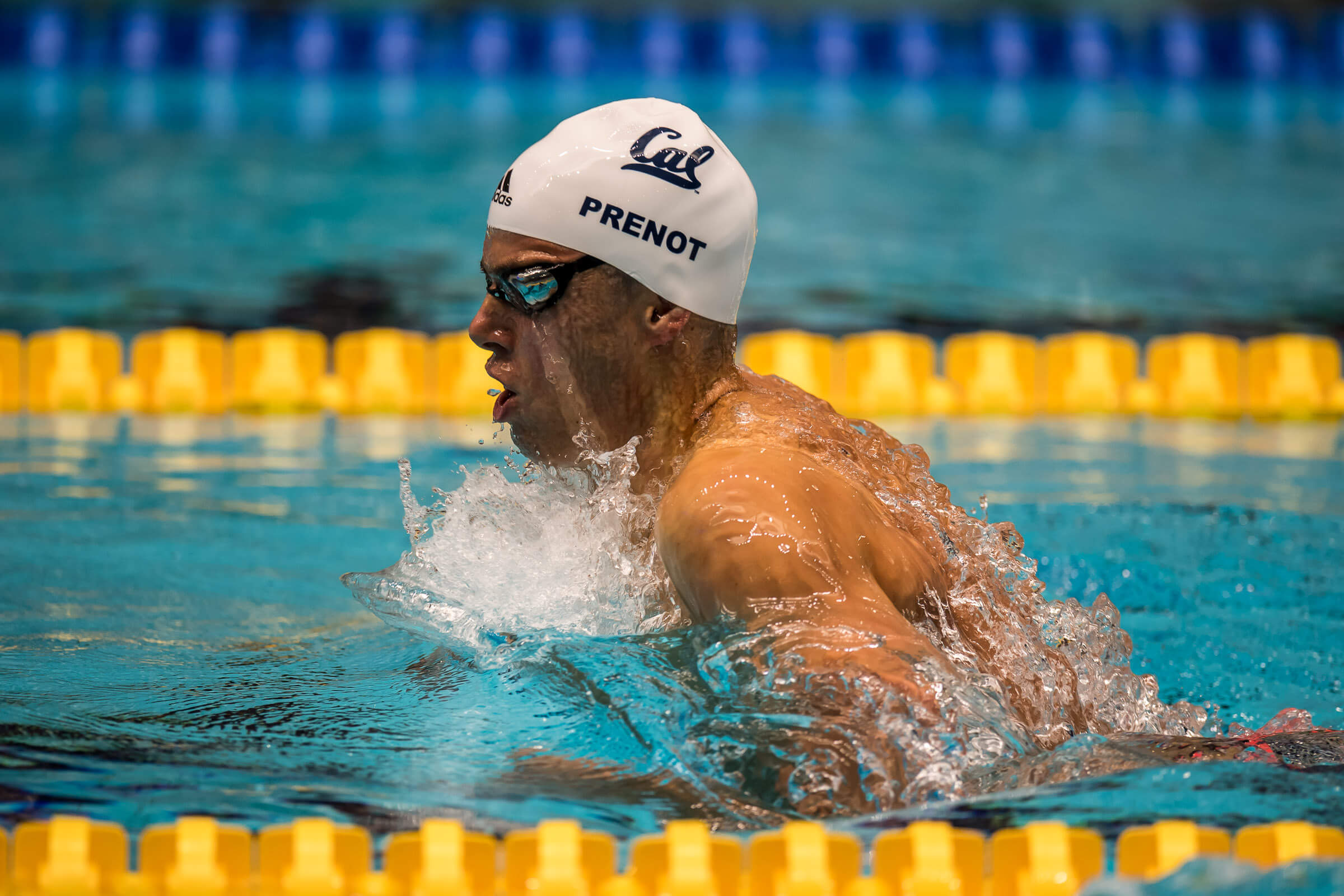
Photo Courtesy: Peter H. Bick
And when they do swim yards, the swimmers have not much idea what to expect from themselves. When Josh Prenot swam the 200 breast Saturday evening at College Challenge, it was his first time contesting the event in 19 months, since finishing second behind Will Licon at his senior-year NCAA championships.
He won the race in 1:53.42. Was that faster or slower than he expected? Rowdy Gaines asked the question on the Pac-12 network post-race television interview, and Prenot proclaimed that the time fell within the range he figured he might swim—a range of ten seconds.
“I don’t really know what that time means anymore, but I’ll take it.”
************************************************************************************
Ella Eastin looked phenomenal this weekend. After her rocky summer, which included her heartbreaking 400 IM at U.S. Nationals, she’s back in the format she has owned to the tune of four individual NCAA titles in her first two years at Stanford.
She nearly broke 4:00 in winning the 400 IM, touching in 4:00.02. That’s the 20th-fastest performance in history, and only two other active NCAA swimmers (Ledecky and Sydney Pickrem) has ever been under 4:00. Remember, it is October, so it’s perfectly conceivable that Eastin could take a shot at Katinka Hosszu’s U.S. Open record of 3:56.54 this college season.
On day two, Eastin added a win in the 200 fly (1:52.83) before tying with Kathleen Baker to win the 200 IM (1:53.24).
Long course has been a source of frustration for Eastin over the past two years, but her short course prowess is unquestioned. Still, any individual accomplishment she can achieve in the 25-yard tank at this point in her career is all secondary to how she can contribute to the Stanford Cardinal.
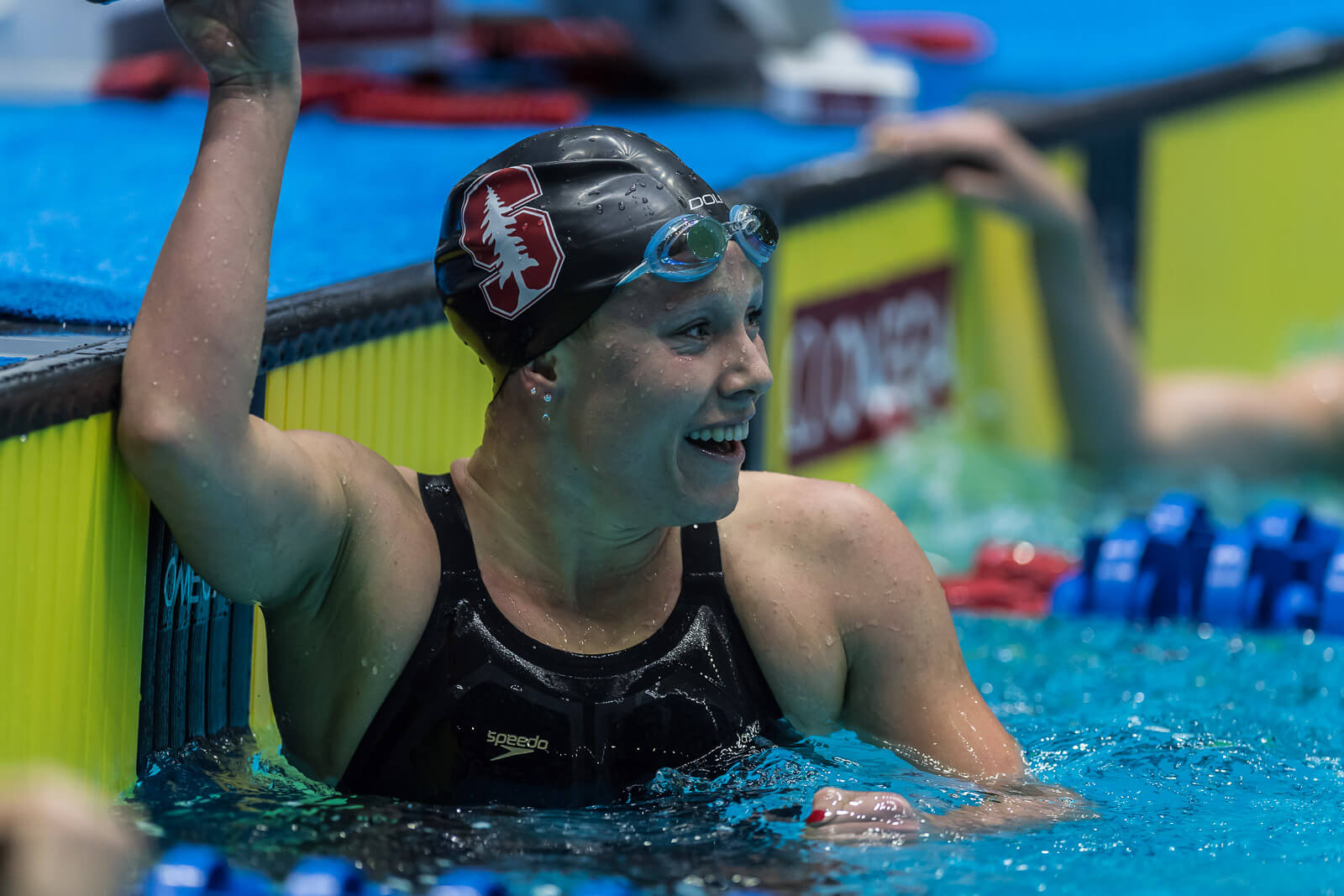
Ella Eastin — Photo Courtesy: Peter H. Bick
As a freshman, Eastin was the best swimmer on a team that very nearly stole an NCAA title. As a sophomore, she was the No. 3 option behind Olympic gold medalists Katie Ledecky and Simone Manuel on a team that dominated the NCAA championships.
This year, most of the core of Greg Meehan’s team back—all except Lia Neal—Stanford is favored for a repeat and for the beginnings of a dynasty. And the team has reinforcements, the most notable of whom is freshman Brooke Forde, who finished second behind Eastin in the 400 IM Saturday night in a brisk 4:02.02.
What the group could accomplish together is means the most for Eastin. At the NCAA meet last year, it was the team’s drought-busting title win, not her own American record or NCAA titles, that nearly brought Eastin to tears. Now, Eastin leads the quest for a repeat.
“We have an opportunity to do something special,” Eastin said in a post-race television interview Saturday evening. “I’m so blessed.”
************************************************************************************
October breakthroughs are rare. That makes sense, right? Grueling early season training typically doesn’t lead to lifetime bests. But in the span of two weeks, USC freshman Maggie Aroesty has cut almost three seconds off her lifetime best in the 200 breast.
When she arrived on campus in August, her lifetime best was 2:09.43. She dropped her best down to 2:08.01 at the SMU Classic in mid-October. And then one week later, she beat out the likes of Olympian Molly Hannis to win the event at the College Challenge in 2:06.88.
Later that evening, Aroesty learned that she had broken the USC pool record, a mark previously owned by Olympic gold medalist Rebecca Soni. At that news, she was almost speechless.
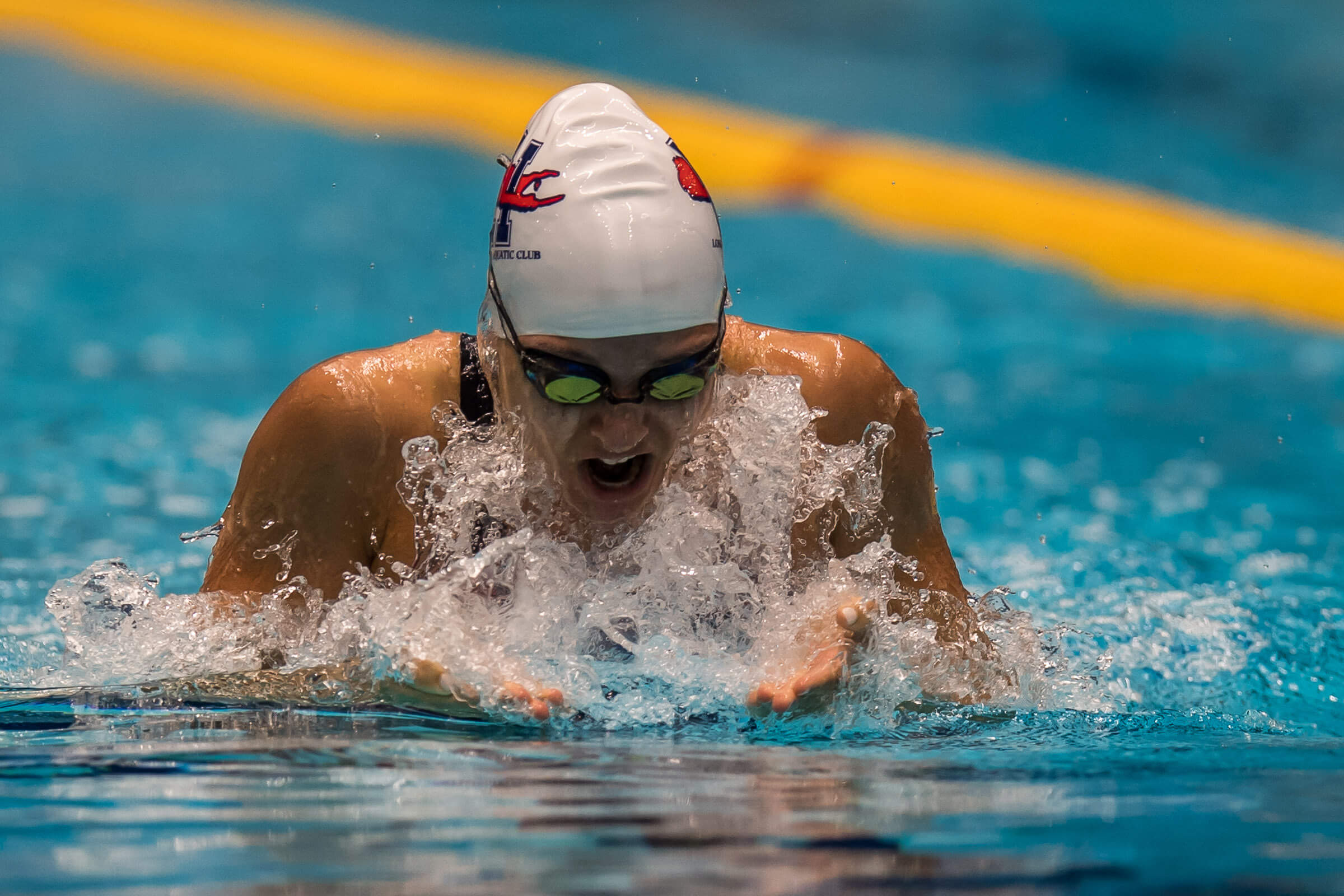
Maggie Aroesty — Photo Courtesy: Peter H. Bick
On day two of College Challenge, Aroesty finished fourth in the 100 breast. She didn’t get to swim either IM event this weekend, but those events are right in her wheelhouse as well. At the SMU Classic, she won the 400 IM in 4:10.18, a time which ranks No. 3 in the country this year behind Eastin and Forde.
Clearly, something is going right in her transition to college. Yes, freshmen often swim well early in their first season, but best times by more than two seconds in a 200? That’s stunning.
“I had a little bit of a rocky year last year, but coming here I just tried to forget about that and create my new beginning,” Aroesty said. “The training has been amazing. I’ve been going so much faster in practice than I have before. I think the different kind of training is helping me.”
But clearly, the difference has to do with more than just the training, and don’t underestimate the impact of climate, coming from Long Island, N.Y., to Los Angeles.
“I would get into these little grooves in New York when it’s cold and rainy and my hair’s freezing after practice—literally frozen,” Aroesty said. “It’s sunny, and so far it’s just been so great. So happy.”
************************************************************************************
Tom Shields is good at underwaters, and he likes swimming in lane one. The underwaters part has been well-known for years, since Shields powered to an NCAA title as a freshman all the way back in 2009. The Southern California-native took advantage of that to win four individual races this weekend—all from lane one.
Shields’ advantage on the underwaters was the difference in all of his wins. With that advantage multiplied in short course, he will take what he can get.
“It’s nice,” Shields said. “It’s nice for sure. I seem to have it in-season, where a lot of guys tapering can catch up. Now I’m trying to figure out how to have that advantage when we’re all tapered.”
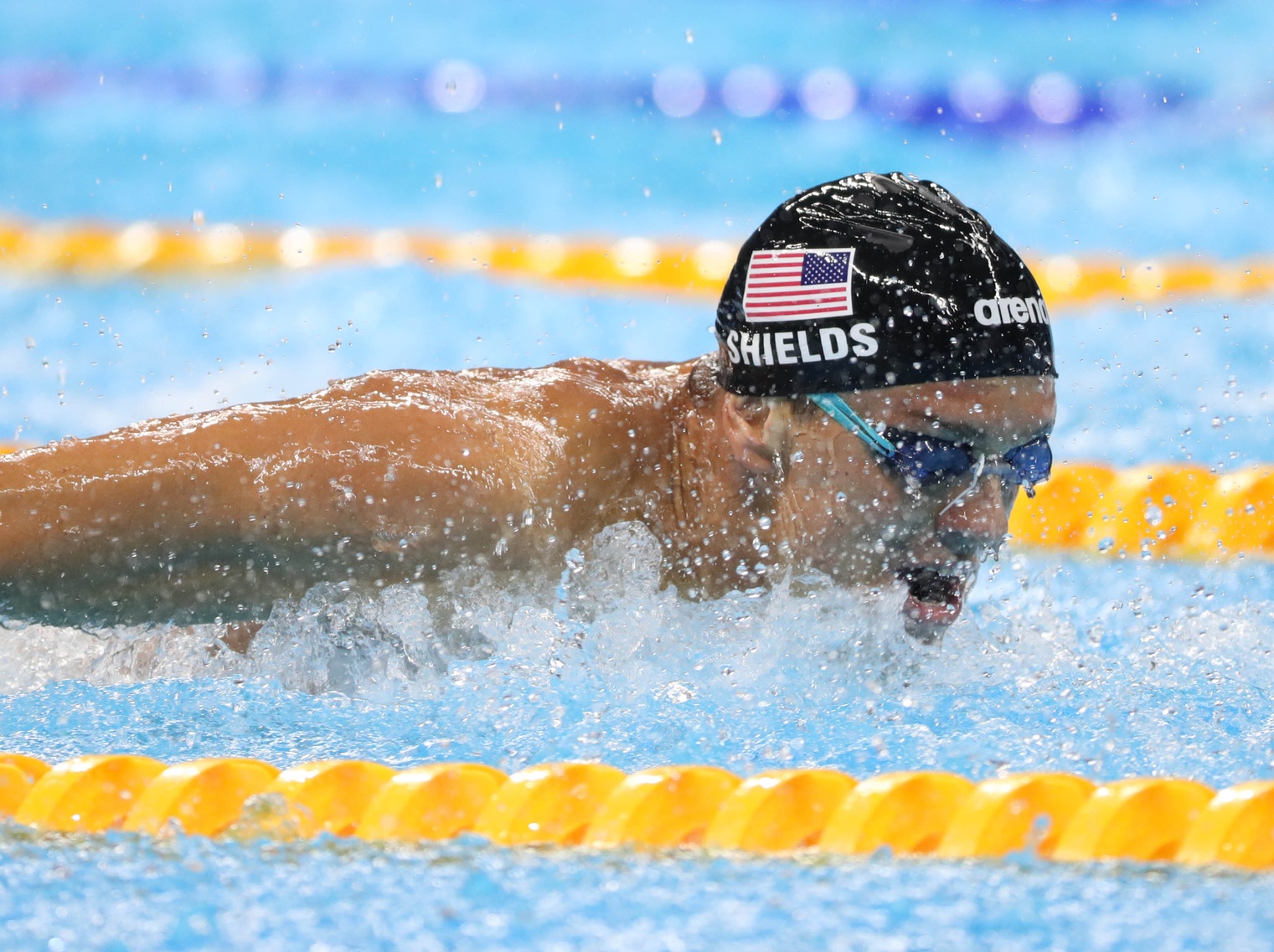
Tom Shields — Photo Courtesy: Rob Schumacher-USA TODAY Sports
The wins came in the 100 and 200 fly and in the 100 and 200 free. Shields won multiple NCAA titles in the fly events and swam the long course versions of both events at the Olympic Games, but freestyle? Not as much his specialty.
Well, not anymore, that is. Shields was an excellent 200 freestyler back in his younger days, including setting a National High School record in the event, but he moved away from the event in college when the 100 fly-200 free back-to-back at the NCAA championships became impractical.
Long course is obviously a different animal than short course, with underwaters having much less of an impact, but would Shields seriously consider focusing more on freestyle moving forward?
“Probably not,” he said. “I swim a pretty flat freestyle, so I’m trying to figure that out. I use it mostly for training right now, and if through using it for threshold training, I get good at it, then fine, yeah, I’ll do it.”




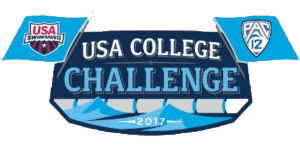
Nice article, just one very small technical error… Your said:” only one other active NCAA swimmer (Sydney Pickrem) has ever been under 4:00.”
Katie Ledecky broke Eastin’s 400IM American record at PAC12 last year in a 3:57. Eastin came back and bettered Ledecky’s record at the NCAA and retook the American record.
Ledecky has only swum the 400IM once, but she is still a very active NCAA swimmer. :>)
a technicality?